Every pastime carries some chance of bumps and bruises, yet a handful of activities push participants so close to nature’s limits that serious harm is never far away. Hospitals still report millions of sports-related injuries each year, and brain trauma continues to top the chart for life-changing outcomes. In the United States alone, more than 3.5 million people seek treatment annually after getting hurt while playing or training, and seven in ten emergency-department visits for concussion involve children and teenagers.
Why focus on 2025? Advances in gear and coaching have trimmed injury totals for some classic sports, yet new records, higher speeds, and fresh adventure destinations constantly reset the risk dial. The list below ranks ten disciplines whose danger remains stubbornly high despite modern safeguards. Each section outlines how the sport works, what can go wrong, stories or data from the past two seasons, and a few plain-spoken tips for anyone tempted to give it a try.
1. Motocross
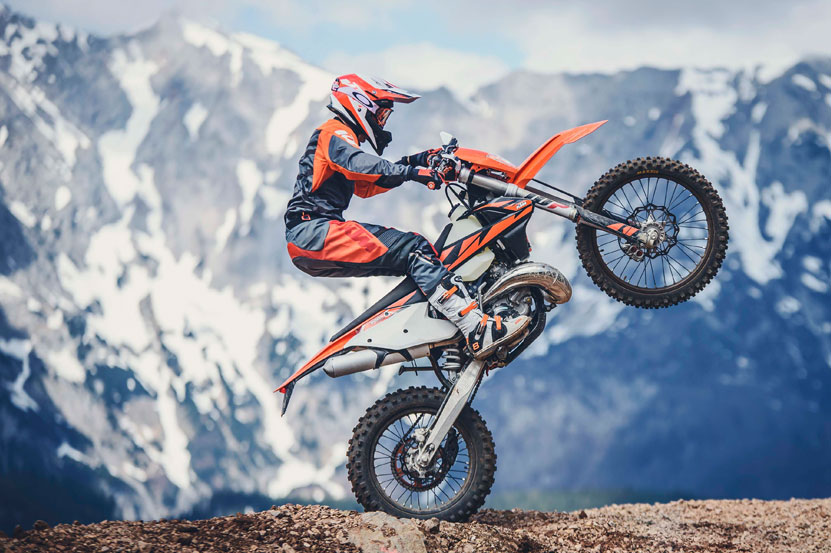
Roosting a dirt bike around hair-pin turns and over blind jumps delivers an unmatched adrenaline surge. Riders face high-speed collisions with other bikes, mid-air miscalculations that end in awkward landings, and hard soil that feels like concrete at 60 km/h. Vital MX’s 2024 injury tracker logged a fresh entry virtually every race weekend, from shattered collarbones to season-ending spinal fractures.
Why it stays hazardous in 2025
- Courses are steeper and more technical than a decade ago, demanding flawless throttle control.
- Amateur leagues adopt pro-style triple jumps without guaranteeing pro-level medical staff on site.
- Helmets save lives, yet limbs and vertebrae remain largely unprotected.
Safety pointers
Build stamina off the bike, keep suspension tuned for your weight, and never attempt a new jump on the first lap—walk the line and visualize a safe exit.
2. B.A.S.E. Jumping
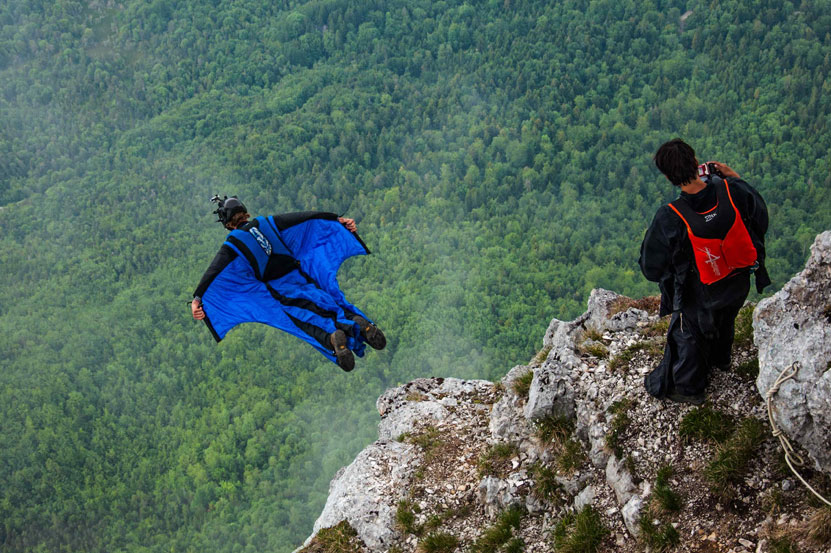
Few sensations rival the free-fall from a cliff or tower with nothing but a low-altitude parachute. That fleeting rush costs dearly: Switzerland alone has recorded 118 BASE fatalities since 1994, with 2024 accounting for two of them—an unusually low number that still underscores ever-present peril.
Risk accelerators
- Uneven exit ledges can snag a pilot chute.
- Fast-changing valley winds spin jumpers into walls.
- A single line-twist may leave no height for recovery.
2024 snapshot
An October plunge in Lauterbrunnen once again showed how close the valley walls loom.
Stay alive tips
Log 200-plus skydives before the first fixed-object leap, rehearse gear checks until they are second nature, and avoid marginal weather no matter how far you traveled.
3. Running of the Bulls (San Fermín, Pamplona)
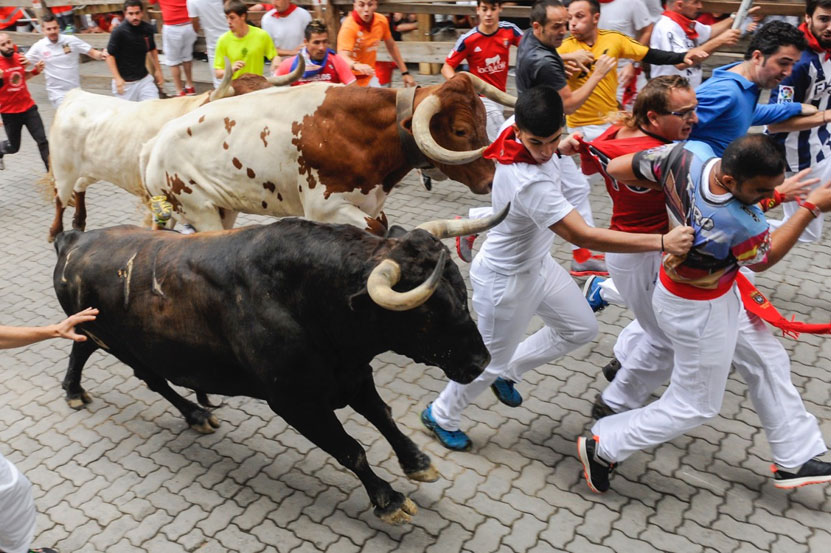
A morning sprint through narrow cobblestone streets, chased by six half-ton fighting bulls, blends festival spirit with real gore. Seven runners required hospital care during the 2024 fiesta, and that was considered a “quiet” day because none suffered horn wounds.
Primary dangers
- Corners funnel crowds into stampede zones.
- Slick stones turn a stumble into a pile-up.
- Bulls trained for the arena ignore distraction tactics once startled.
How enthusiasts try to stay upright
Light shoes with deep tread, elbows high for balance, and absolutely no alcohol before dawn. Even then, local medics set broken bones every July.
4. Highlining
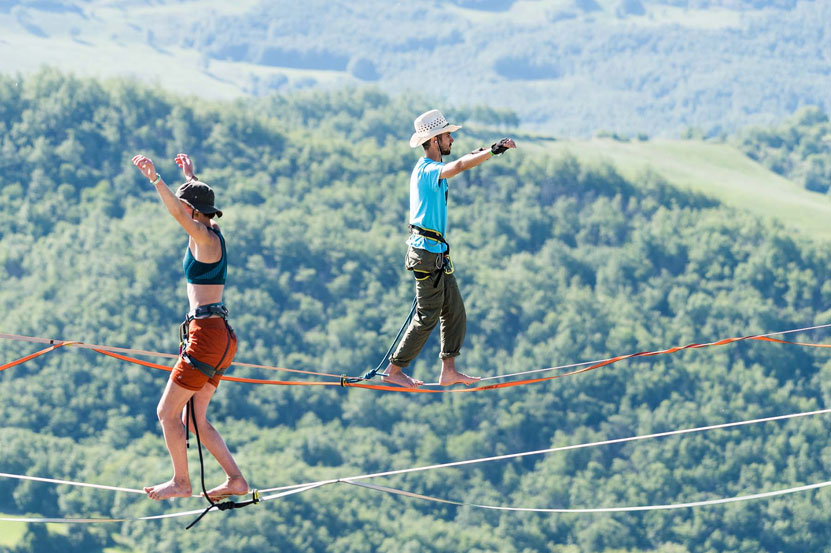
Imagine tight-rope walking, except the line is one-inch webbing strung between cliffs hundreds of meters up. Clip-in leashes catch falls, but a violent swing can slam a body into rock. May 2025 began with heartbreak in British Columbia when a 22-year-old highliner fell and died while traversing a forested canyon.
Unique threats
- Anchor failure from hidden crack expansion.
- Sudden gusts that whip the line sideways.
- Psychological fatigue—focus slips for one second and gravity wins.
Reduce the odds
Double every knot, keep backup anchors independent, and practice exposure management on short, low lines before pursuing record gaps.
5. Heli-Skiing
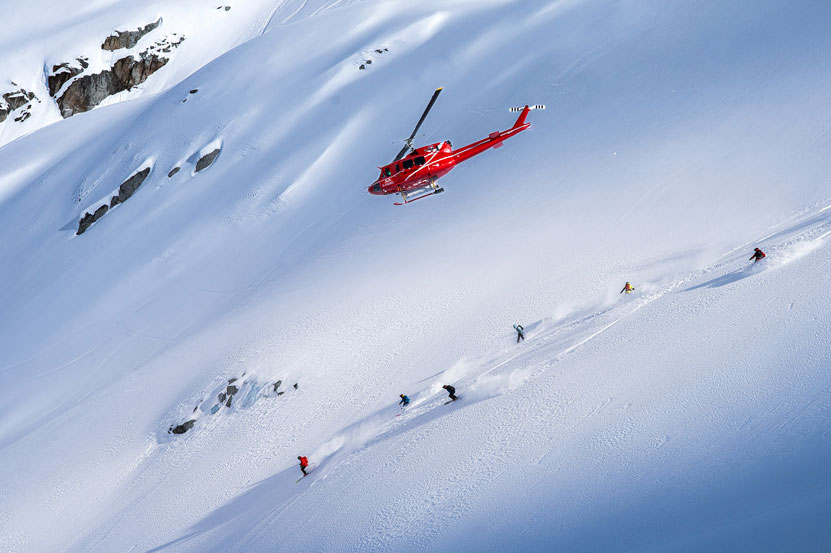
Helicopters drop skiers on untouched alpine faces where avalanche control is minimal. The U.S. avalanche database lists multiple fatal slides every winter, many involving guided heli groups.
Why risk remains high
- Guests may over-rely on guides and ignore their own gut instinct.
- Snowpacks above treeline change hourly with sun and wind loading.
- Rapid altitude gain taxes lungs and judgment.
Sensible precautions
Carry an avalanche transceiver, probe, and shovel even on “expert-only” trips, drill companion rescue skills, and speak up if a slope angle or crust feels off—peer pressure is not worth suffocation under two meters of snow.
6. Volcano Surfing
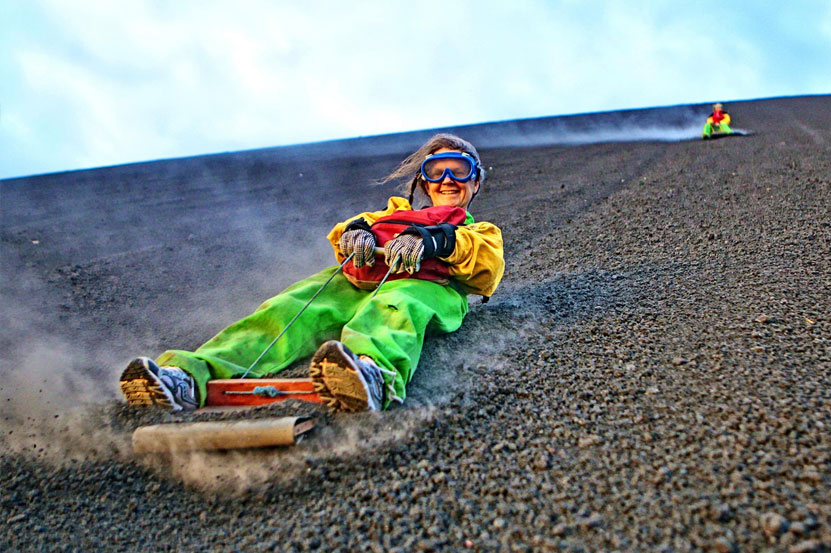
Riders hurtle down the cinder cone of Cerro Negro in Nicaragua on plywood sleds that can top 90 km/h. The extreme slope, loose ash, and razor-sharp lava rocks combine for gruesome wipeouts. A published medical case describes an open-leg fracture from volcano boarding, a reminder that standard travel insurance rarely covers such stunts.
Hazard checklist
- Steel shards hide in the ash after eruptions.
- A simple tumble leaves little fabric between skin and volcanic glass.
- Cooling lava can still burn through clothing.
If you insist on trying
Goggles, a motorcycle-grade jacket, and closed-toe boots offer minimal armor. Most injuries occur near the base when riders relax too early—stay crouched and brake gradually with both feet.
7. Wingsuit Flying
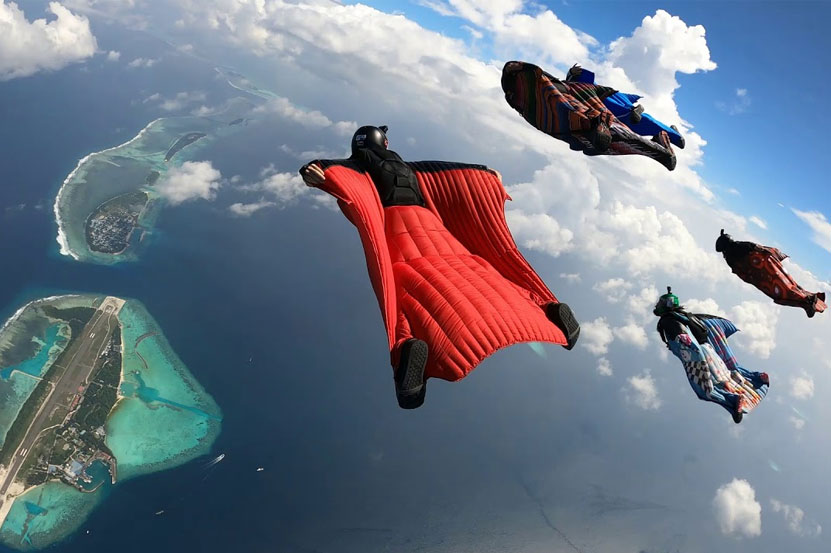
The human flight fantasy, realized through a nylon suit that turns arms and legs into gliding surfaces, delivers perhaps the sharpest risk-reward profile of any modern sport. One respected analysis pegs the fatality rate at roughly one death per 500 jumps. A May 2024 accident in Ticino, Switzerland tragically confirmed the odds.
Main killers
- Terrain proximity: carving within meters of rock to boost speed.
- “Line overs” where a deploying parachute tangles around a wing.
- Misjudged flare height at landing.
Mitigation tactics
Accumulate at least 200 standard skydives, then 50 tracking-suit flights, before buying a wingsuit. Use audible altimeters, choose forgiving locations, and remember that no video clip is worth a granite wall.
8. Big Wave Surfing
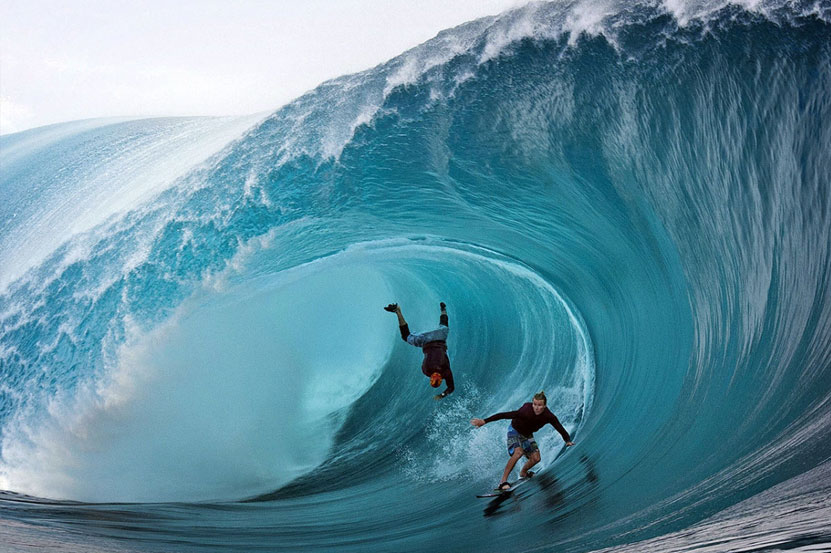
Swells topping eight meters pack the punch of a suburban train. When Australian charger Laura Enever’s board fin sliced her thigh at the 2024 Eddie Aikau Invitational, surgeons rushed to save a major artery—and that was without a hold-down.
Why surfers still line up
- Giant waves deliver prolonged, steep drops that few ever experience.
- Contest purses and sponsorships continue to climb.
- Social-media coverage rewards only the gnarliest rides.
Key threats
- Two-wave hold-downs where lungs burn for 30 seconds past empty.
- Lacerations from fins and reef.
- Jet-ski rescue delay when multiple boards snap at once.
Commonsense defenses
Inflatable vests, clear hand signals with rescue skis, and rigorous breath-hold drills allow riders to surface sooner after a wipeout.
9. White-Water Rafting

Class V rapids combine frothing hydraulics, submerged rocks, and ice-cold snowmelt. The American Whitewater accident log recorded multiple fatalities in spring 2025 alone.
Danger dynamics
- A flipped raft can recirculate in a “keeper” hole.
- Strainers—fallen trees—act like underwater sieves.
- Remote canyons delay paramedic access.
Reducing exposure
Wear a high-float PFD, lock feet under thwarts only when the guide directs, and learn the defensive swim position: on the back, feet downstream to push off obstacles.
10. American Football

Protective padding has grown smarter, and the NFL recorded a 17 percent drop in concussions during the 2024 season—yet the total still hit triple digits, and thousands of amateur players lack pro-grade equipment.
Why gridiron injuries persist
- Bodies keep getting larger and faster, multiplying collision forces.
- Sub-concussive hits accumulate through years of practice.
- Lower-level leagues may skip certified athletic trainers on the sideline.
Emerging safety moves
Guardian helmet covers in practice, kickoff-rule tweaks to curb sprint collisions, and greater emphasis on technique over sheer impact have shown promise, but the sport’s contact DNA means risk can only be trimmed, not erased.
Conclusion
From motorcrosser to quarterback, thrill seekers share a simple truth: the bigger the rush, the thinner the margin for error. Some of these activities—wingsuit flights skimming cliffs, sledding down an active volcano—place survival one slip away, while others, like American football, trade severe but less-frequent trauma for global popularity and professional opportunity.
In 2025, innovative gear and rule changes are inching several sports toward safer territory. Even so, raw physics, volatile landscapes, and human ambition guarantee that danger will never be fully engineered out. Whether you ride a dirt bike, chase bulls through Pamplona, or simply tune in on Sunday, recognize the real cost behind the spectacle. Excitement thrives where risk and preparation intersect; skew too far toward the former, and the story often ends in a hospital bed or worse. Know the hazards, respect them, and charge ahead only when your training—and your mindset—are ready to fend off the unexpected.

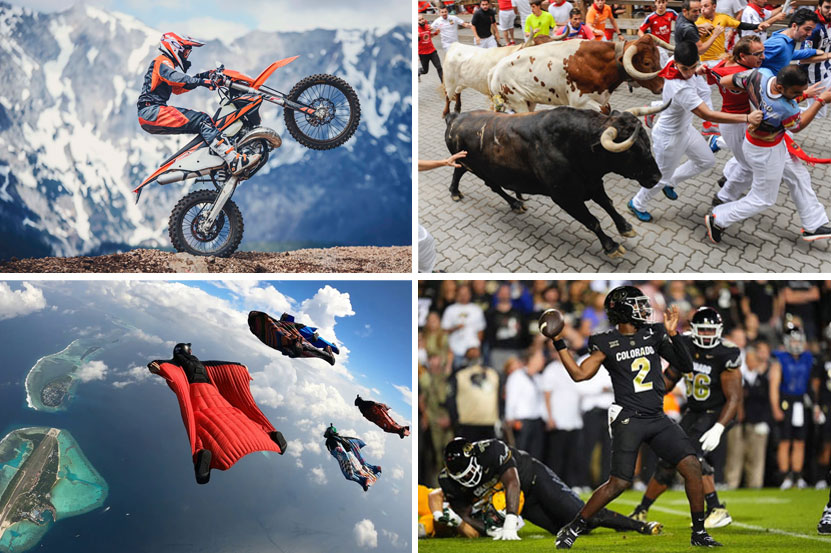
Leave a Reply